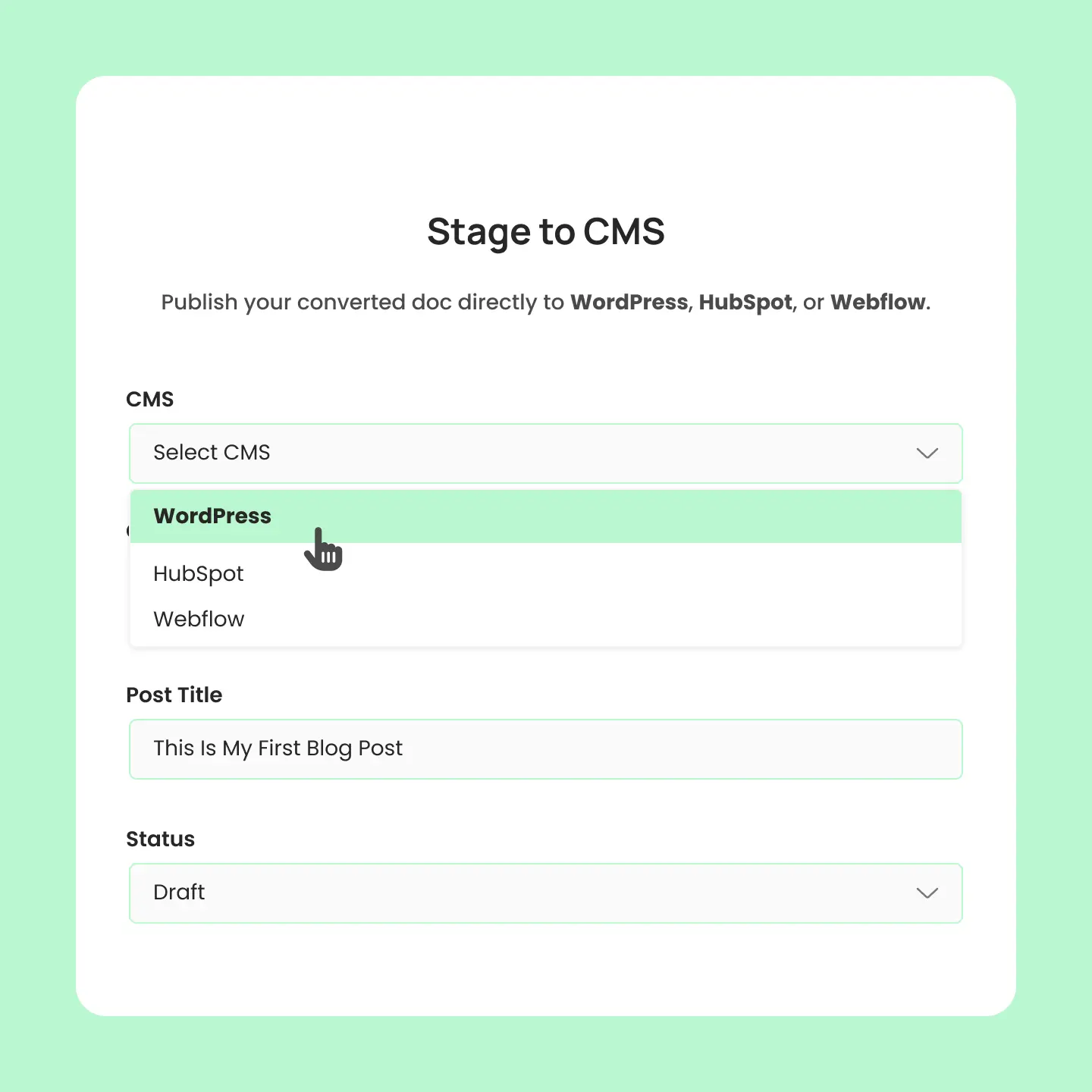At a glance
Overview
See how BlogSync and Docswrite stack up across key features, integrations, and capabilities to make the right choice for your workflow.
Features
Google Docs support
Microsoft Word (.docx) support
Real-time processing
File support
Export limits
Browser extension
Integrations
WordPress integration
(publish to WordPress)
HubSpot integration
(publish to HubSpot)
Webflow integration
(publish to Webflow)
Medium integration
Zapier integration
Image processing
AI image optimization
Image deduplication
AI-powered alt tag and image naming
Organization management
Organization accounts
Audit trail
Role-based permissions
Plugin support
SEO plugin support
Plugin required
BlogSync
Live progress updates
Up to 50MB
Up to unlimited exports



Enterprise structure
Complete conversion history

Web-based (no WordPress plugin needed)
Docswrite

Standard processing
Standard file sizes
Up to unlimited exports






Individual/small team focus
Basic publishing history
Yoast & RankMath integration
Web-based (no WordPress plugin needed)



